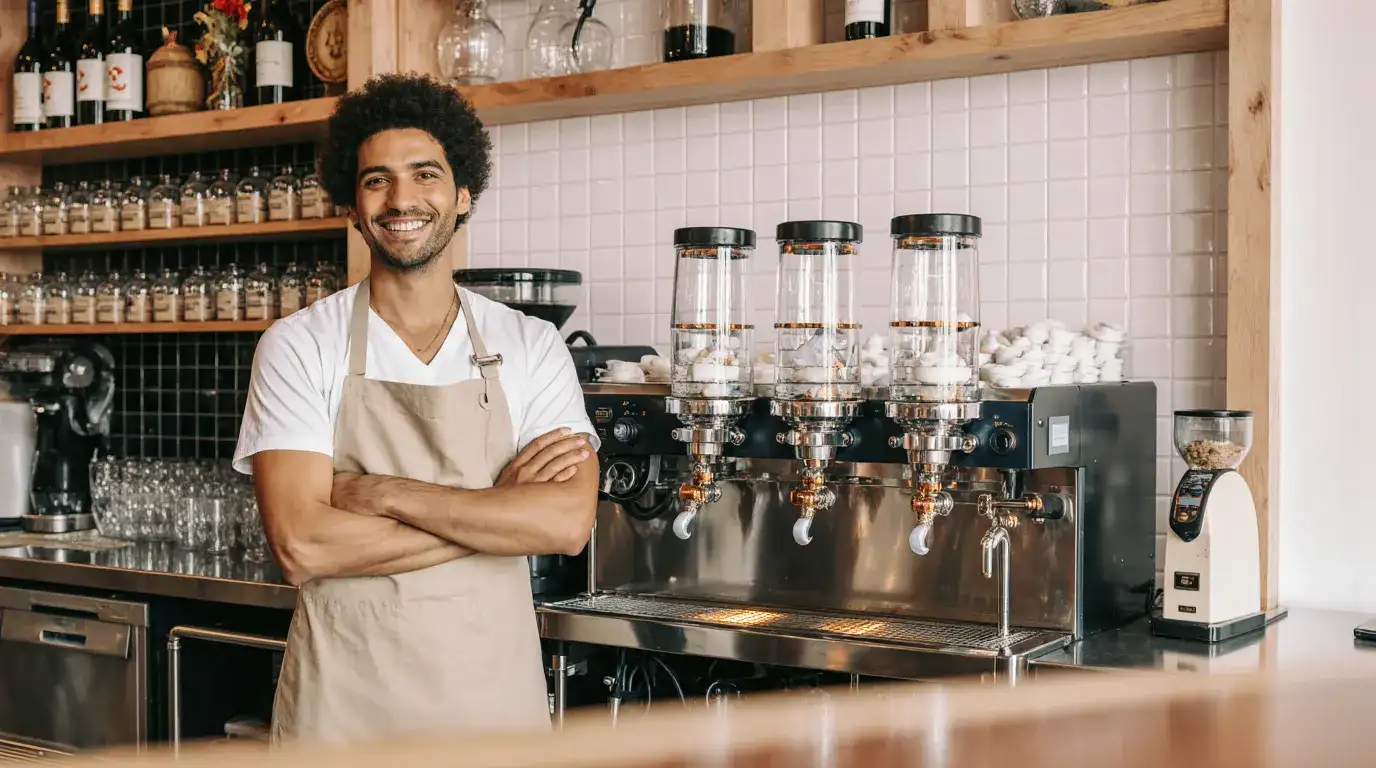
Coffee in Shop 2025 – Fresh Brews & Cozy Moments Inside
The coffee in shop scene in 2025 is an exciting mix of old-school charm and new-age creativity. Your neighborhood café has evolved into a lively spot where state-of-the-art technology blends seamlessly with traditional brewing techniques. The worldwide coffee industry continues to grow, fueled by a fresh wave of coffee lovers on the lookout for one-of-a-kind experiences.
Key Trends Shaping Modern Coffee in Shops
Today’s coffee shops are fully embracing these major trends that are shaping the industry:
- Sustainability Focus: Eco-friendly practices and responsible sourcing
- Tech Integration: Digital ordering systems and smart brewing equipment
- Community Building: Spaces designed for connection and collaboration
- Health-Conscious Options: Plant-based alternatives and wellness-focused drinks
Evolving Consumer Preferences
Coffee lovers now have more specific preferences when it comes to their orders. Here are some examples of what customers are requesting:
- Single-origin beans with traceable sourcing
- Creative cold brew variations
- Superfood-enhanced beverages
- Personalized drink customizations
The Coffee in Shop Experience in 2025
In 2025, visiting a coffee in shop is all about enjoying top-notch brews while also exploring innovative ideas. These places have become social hubs where you can:
- Indulge in your go-to coffee
- Engage in cultural activities
- Work remotely
- Connect with fellow coffee enthusiasts
The industry’s ability to adapt to changing consumer demands has paved the way for a delightful blend of classic coffee appreciation, modern convenience, and sustainable practices.
Table of Contents
1. Sustainability and Innovation in Coffee in Shops
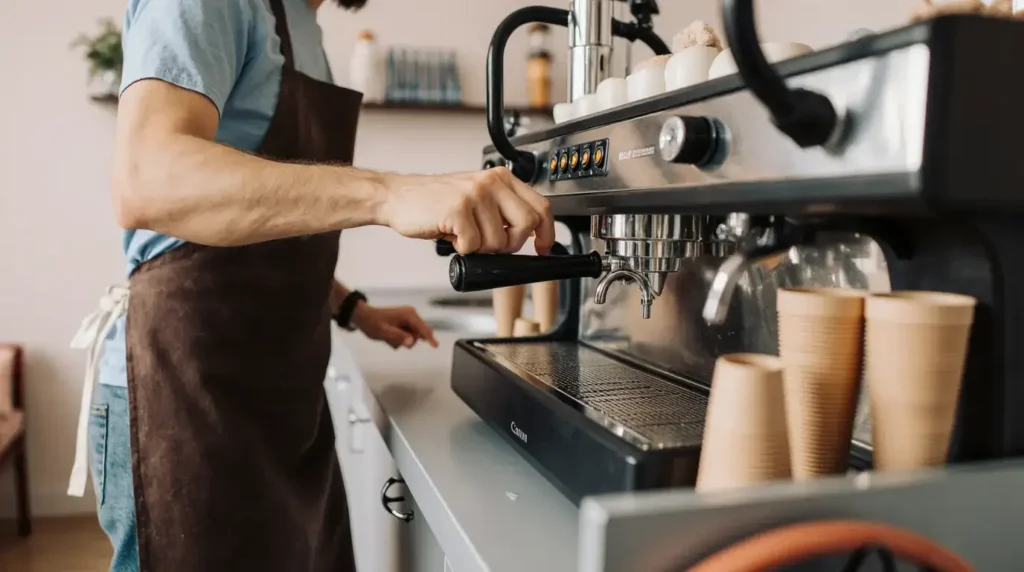
Coffee in shops in 2025 are at the forefront of sustainable practices, transforming how businesses approach environmental responsibility. These establishments implement comprehensive waste tracking systems that monitor and minimize food waste, coffee grounds, and packaging materials.
Key Sustainable Initiatives:
- Zero-waste programs converting used coffee grounds into fertilizer
- Energy-efficient equipment reducing power consumption by 40%
- Water recycling systems for cleaning and plant maintenance
- Biodegradable packaging made from coffee chaff and mushroom materials
- Solar panel installations powering daily operations
The adoption of eco-friendly practices extends beyond waste management. Coffee in shops now feature living walls and indoor gardens, creating natural air purification systems while growing herbs for signature drinks. These green spaces reduce energy costs and create a biophilic environment that enhances customer well-being.
Innovative Technology Integration:
- Smart sensors monitoring energy usage and waste production
- AI-powered inventory management reducing food waste
- Blockchain tracking systems ensuring ethical sourcing
- Automated composting systems processing organic waste
- Digital platforms connecting customers to sustainability initiatives
Coffee in shops partner with local farmers to create closed-loop systems, where coffee grounds nurture new crops. This partnership reduces transportation emissions and supports regional agriculture. Many establishments now operate their own micro-gardens, producing ingredients for specialty drinks and food items.
The industry’s commitment to sustainability drives innovation in equipment design. New coffee machines use 60% less water while maintaining brew quality. Roasters incorporate heat recycling technology, capturing and reusing energy from the roasting process.
These sustainable practices attract environmentally conscious customers and create new revenue streams. Coffee in shops sell their composted grounds to local gardeners, offer refill programs for coffee beans, and host workshops on sustainable living. The combination of eco-friendly initiatives and innovative solutions positions modern coffee in shops as leaders in sustainable business practices.
2. Specialty Coffee Segment Expansion
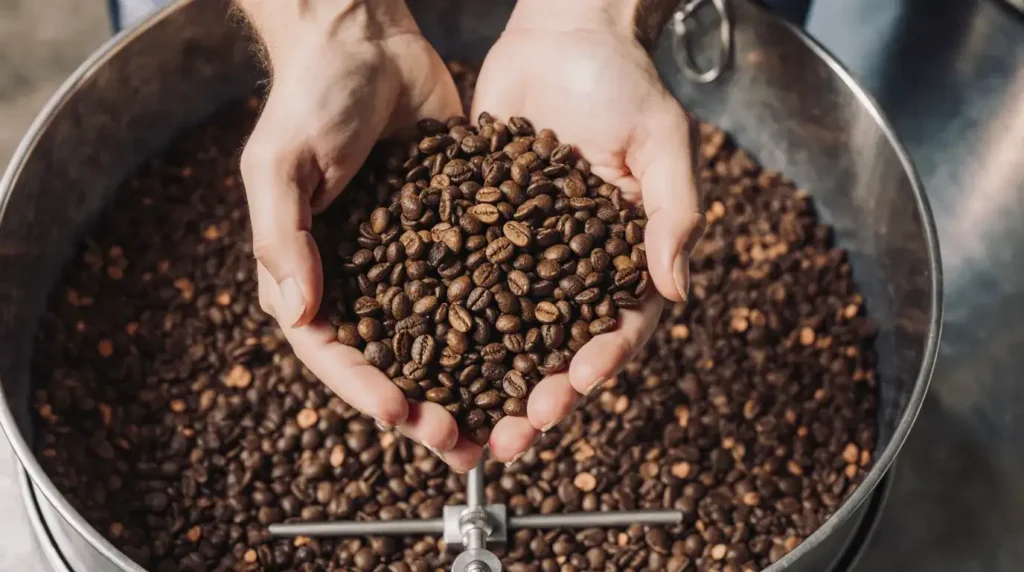
The specialty coffee market has transformed into a thriving ecosystem of unique flavors and experiences. Coffee enthusiasts now seek out distinctive taste profiles and brewing methods, driving the rapid growth of specialty coffee shops across urban centers.
Single-Origin Excellence
- Ethiopian Yirgacheffe beans offering bright, floral notes
- Colombian Huila beans bringing chocolate and caramel undertones
- Panama Geisha varieties presenting delicate tea-like characteristics
Creative cold brew innovations have redefined summer refreshments. Coffee shops experiment with:
- Nitrogen-infused cold brews creating a creamy, stout-like texture
- Japanese-style slow drip towers producing crystal-clear coffee
- Cold brew concentrates infused with botanical elements
The rise of superfood lattes marks a significant shift in coffee shop menus. These wellness-focused beverages combine traditional coffee craftsmanship with functional ingredients:
Popular Superfood Combinations
- Golden milk lattes – turmeric, black pepper, cinnamon
- Mushroom coffee blends – chaga, lion’s mane, reishi
- Matcha espresso fusions – green tea powder, espresso shots
- Blue algae lattes – spirulina, coconut milk, vanilla
Specialty coffee shops now double as laboratories for innovative drink creation. Baristas craft signature beverages using:
- House-made botanical syrups
- Locally sourced honey varieties
- Artisanal chocolate blends
- Small-batch alternative sweeteners
The demand for unique coffee experiences has sparked a wave of educational initiatives. Coffee shops host cupping sessions, brewing workshops, and origin stories to deepen customer appreciation for specialty coffee cultivation and preparation methods.
3. Plant-Based Milk and Health-Conscious Options
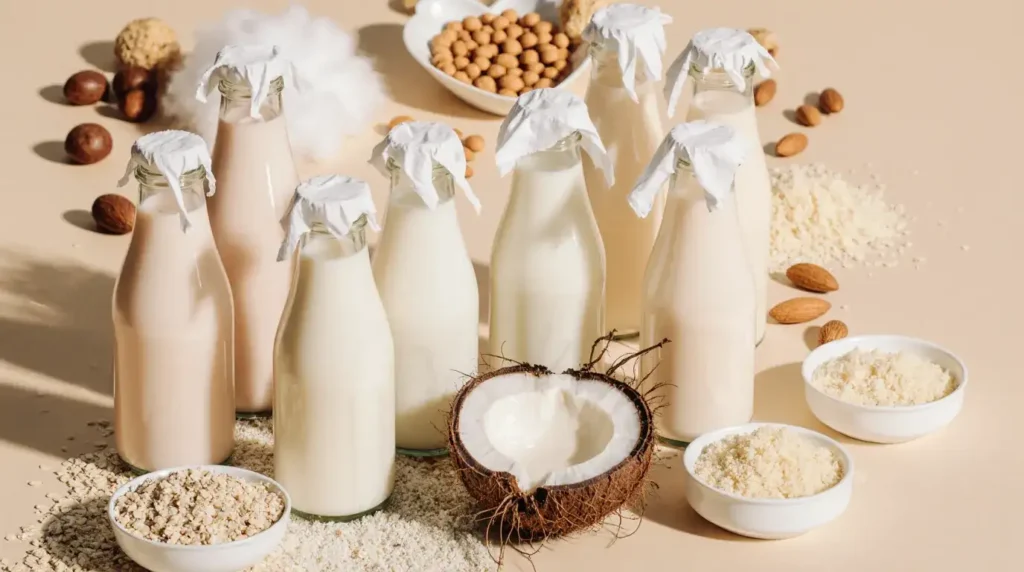
The rise of plant-based milk has completely changed coffee shop menus in 2025. Coffee lovers now have a wide range of dairy alternatives to choose from:
- Pistachio milk – Packed with antioxidants and has a creamy texture
- Walnut milk – Loaded with omega-3 fatty acids
- Pea milk – High in protein, great for post-workout lattes
- Enhanced oat milk – Fortified with vitamins and minerals
Health-Conscious Consumers Driving the Shift
Health-conscious consumers are driving this change, looking for drinks that align with their wellness goals. Coffee shops now display detailed nutritional information and health benefits for each milk alternative, empowering customers to make informed choices.
Creative Innovations in Coffee Preparation
The demand for guilt-free indulgence has led to creative innovations in how coffee is made. Baristas are coming up with unique drinks using:
- Sugar-free natural sweeteners
- Protein-enriched milk alternatives
- Functional additives like collagen and probiotics
Optimizing Taste and Texture of Plant-Based Drinks
Coffee shops are also adjusting their recipes to make plant-based drinks taste even better. They’re using special temperature controls and precise measurements to ensure these alternatives stay consistent and enhance the flavor of the coffee.
Expanding Offerings Beyond Beverages
The health-conscious trend isn’t just limited to drinks. Modern coffee shops are also stocking:
- Low-glycemic pastries made with alternative flours
- Protein-rich snacks that go well with functional coffee drinks
- Raw energy balls made with superfoods and natural ingredients
Specialized Equipment for Plant-Based Options
To cater to different milk alternatives, coffee shops are investing in specialized equipment. Advanced steam wands and temperature-controlled pitchers are being used to create the perfect microfoam for latte art using plant-based options.
Integration of Health-Tracking Apps
The rise of health-tracking apps is seamlessly integrating with coffee shop offerings. Customers can scan QR codes to access detailed nutritional information and keep track of their daily intake. This transparency builds trust and loyalty among health-conscious consumers.
4. Experiential Design and Community Building in Coffee in Shops
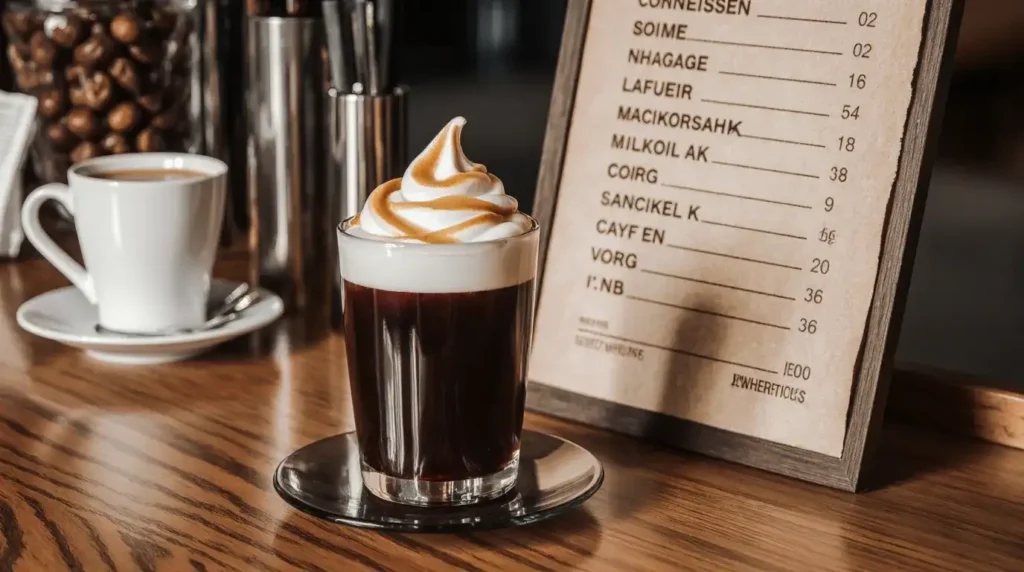
Modern coffee shops have evolved beyond simple beverage service into immersive spaces that engage all senses. The strategic implementation of experiential design transforms these venues into destinations where customers want to spend time, connect, and create memories.
Design Elements That Create Atmosphere:
- Carefully curated lighting schemes that adjust throughout the day
- Acoustic treatments to balance conversation and ambient noise
- Natural materials like wood and stone that add warmth
- Living walls and indoor plants for biophilic connection, which can also be explored further in this article about greening your home
- Flexible seating arrangements for different group sizes
- Art installations and rotating gallery spaces
Coffee shops now serve as vital community hubs, hosting diverse cultural activities that bring people together. These spaces foster meaningful connections through:
Creative Workshops
- Latte art classes
- Coffee brewing techniques
- Local artist demonstrations
- Craft workshops
Cultural Events
- Poetry readings
- Live music performances
- Book clubs
- Language exchange meetups
Community Initiatives
- Local vendor markets
- Fundraising events
- Educational seminars
- Networking sessions
The physical layout of modern coffee shops intentionally encourages interaction and community building. Communal tables, conversation nooks, and dedicated event spaces create opportunities for spontaneous connections between customers.
Many establishments partner with local organizations to host regular community events. These partnerships extend beyond traditional coffee shop offerings to include wellness sessions, professional development workshops, and cultural celebrations that reflect the neighborhood’s character.
The integration of digital community boards and social media walls helps bridge physical and virtual connections, allowing customers to stay informed about upcoming events and share their experiences. This blend of physical space and digital connectivity creates a dynamic environment that keeps customers engaged and coming back for more than just coffee.
5. Technology Integration Enhancing Customer Experience in Coffee in Shops

Digital innovation transforms the modern coffee in shop experience through smart solutions that streamline operations and enhance customer satisfaction. Coffee in shops in 2025 leverage technology to create seamless interactions between customers and staff.
Smart Ordering Systems
- QR code menus enable instant access to digital menus
- Mobile ordering apps reduce wait times during peak hours
- AI-powered recommendation systems suggest personalized drink options
- Real-time inventory tracking prevents menu item unavailability
Digital Payment Solutions
- Contactless payment methods speed up transactions
- Mobile wallet integration supports diverse payment preferences
- Automated billing systems reduce human error
- Split-bill features accommodate group orders
Enhanced Loyalty Programs
- Digital reward systems track customer preferences
- Personalized promotions based on purchase history
- Points accumulation through mobile apps
- Birthday rewards and special occasion perks
- Gamification elements encourage repeat visits
Cloud-Based Operations
- Real-time sales data analysis
- Staff scheduling optimization
- Inventory management automation
- Customer feedback collection and analysis
The integration of these technological solutions creates measurable benefits for coffee shop operations:
- 40% reduction in order processing time
- 25% increase in customer retention through digital loyalty programs
- 30% improvement in inventory management accuracy
- 20% boost in average transaction value
Coffee shops utilizing these technologies report higher customer satisfaction rates and increased operational efficiency. The data collected through these systems enables businesses to refine their offerings and create targeted marketing campaigns that resonate with their customer base.
These digital transformations pave the way for coffee shops to deliver personalized experiences while maintaining operational excellence. The combination of smart technology and traditional coffee craftsmanship creates an environment where efficiency meets authenticity.
6. Customization and Personalized Options: Catering to Diverse Tastes in Coffee in Shops
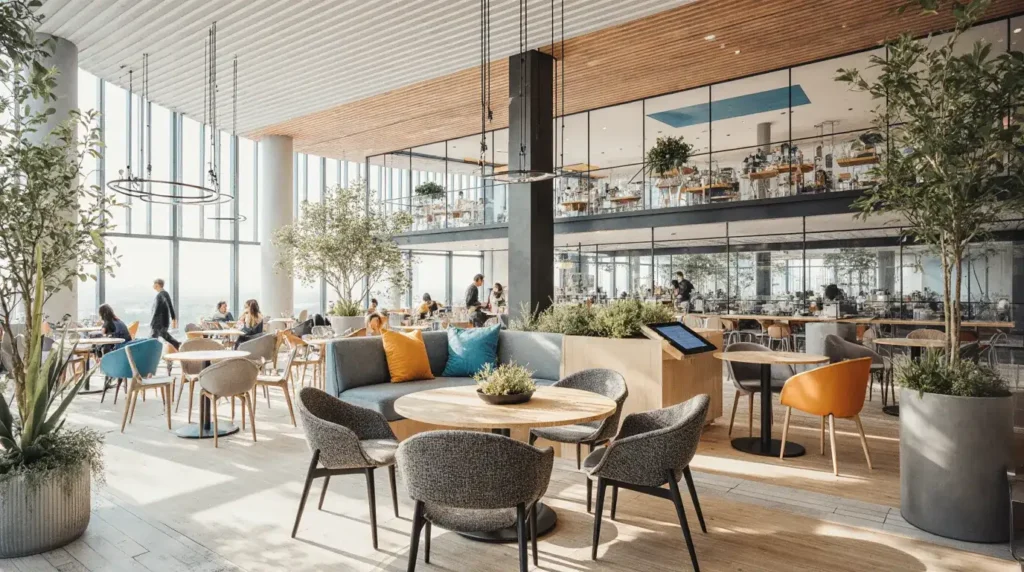
The rise of customization in coffee in shops reflects a fundamental shift in consumer behavior. Gen Z leads this transformation, demanding drinks that match their unique preferences and personality. This generation views customized coffee as a form of self-expression, pushing coffee in shops to expand their customization options.
Popular Customization Options:
- Adjustable espresso shot strength
- Temperature control preferences
- Alternative milk selections
- Flavor intensity modifications
- Custom syrup combinations
- Specialty toppings and garnishes
Coffee in shops now offer extensive personalization through build-your-own drink stations. These stations feature:
- Multiple espresso roast options
- House-made flavored syrups
- Artisanal toppings
- Texture variations
- Size customizations
The demand for espresso-based beverages continues to grow, with customers seeking precise specifications for their drinks. Baristas now craft drinks with exact measurements:
- Shot timing: 25-30 seconds
- Water temperature: 195-205°F
- Milk texturing: microfoam density
- Coffee-to-milk ratios
Gen Z Coffee Preferences:
- Bold flavor combinations
- Instagram-worthy presentations
- Health-conscious modifications
- Sustainable ingredient options
- Cultural fusion drinks
Coffee in shops adapt their menus to accommodate these preferences through:
- Seasonal signature drinks
- Limited-edition flavors
- Collaborative creations with local artists
- Customer-inspired beverages
- Regional taste variations
This personalization trend extends beyond beverages to include:
- Custom coffee bean blends
- Personalized loyalty rewards
- Individual brewing methods
- Signature drink naming rights
- Custom cup designs
7. Supply Chain Adaptations and Product Diversification Strategies for Coffee Businesses

Rising arabica prices have pushed specialty coffee businesses to reimagine their supply chain strategies. Direct trade relationships with farmers stand at the forefront of these adaptations, creating sustainable partnerships that benefit both parties.
Key Supply Chain Innovations:
- Blockchain technology implementation for transparent bean sourcing
- Smart contracts reducing intermediary costs
- Digital platforms connecting roasters directly with producers
- Real-time inventory tracking systems
- Predictive analytics for demand forecasting
Coffee businesses now establish year-round purchasing agreements with farmers, securing premium beans at stable prices. These direct relationships enable quality control from farm to cup while ensuring fair compensation for producers.
Product Portfolio Expansion
The ready-to-drink (RTD) coffee segment has emerged as a significant revenue stream. Businesses diversify their offerings through:
- Bottled cold brew concentrates
- Nitrogen-infused canned coffees
- Shelf-stable espresso drinks
- Coffee-based energy beverages
- Premium instant coffee solutions
Market segmentation drives product development strategies. Coffee in shops target different consumer groups through varied price points and packaging options:
- Premium single-origin RTD lines for coffee enthusiasts
- Value-packed multi-serve formats for families
- Grab-and-go options for busy professionals
- Subscription-based bean delivery services
- Private label partnerships with retailers
Supply chain resilience comes through geographic diversification of bean sourcing. Businesses maintain relationships with producers across multiple regions, protecting against climate-related disruptions and local market fluctuations.
Data analytics guide inventory management and product development decisions. Coffee in shops use customer purchase patterns to optimize their product mix and reduce waste. This data-driven approach helps maintain profitability despite rising operational costs.
Conclusion
The coffee in shop landscape of 2025 represents a dynamic blend of tradition and innovation. Coffee establishments have evolved beyond being just places that serve drinks into versatile spaces that focus on quality coffee while also adapting to significant shifts in consumer behavior.
The successful coffee in shop model combines:
- Sustainable practices that respect both the environment and the community
- Advanced technology solutions improving the customer experience
- Diverse product offerings catering to health-conscious preferences
- Engaging social experiences that foster lasting connections
These establishments create environments where wellness trends and coffee culture come together seamlessly. The rise of plant-based options, superfood additions, and customizable beverages shows how adaptable the industry is to changing consumer demands.
The future of coffee in shops depends on their ability to:
Create spaces that encourage both productivity and relaxation Stay true to their roots while embracing innovation Build meaningful connections through engaging social experiences
Coffee in shops in 2025 are proof of the industry’s resilience and creativity. They’ve mastered the art of providing exceptional in-shop coffee experiences while also keeping up with technological advancements and changing consumer preferences. These places continue to be important community hubs where top-notch drinks, eco-friendly practices, and genuine human connections come together to create unforgettable experiences for every customer who enters.
FAQs (Frequently Asked Questions)
What are the key sustainability and innovation trends in coffee shops for 2025?
In 2025, coffee in shops emphasize sustainability by adopting eco-friendly practices and innovative approaches that reduce environmental impact while enhancing customer experience.
How is the specialty coffee segment expanding in modern coffee in shops?
The specialty coffee segment is growing with increased demand for unique offerings such as single-origin beans, creative cold brews, and popular superfood lattes featuring distinctive ingredients.
Why are plant-based milks and health-conscious options gaining popularity in coffee shops?
Rising health awareness among consumers drives the popularity of plant-based milks and other health-conscious choices, reflecting a shift towards wellness trends within the coffee market.
What role does experiential design play in coffee shops today?
Experiential design creates unique atmospheres that enhance customer engagement, turning coffee shops into community hubs that foster connections through cultural activities and social experiences.
How is technology integration enhancing customer experience in coffee shops?
Technology integration such as QR code menus and digital loyalty programs streamlines operations and offers personalized benefits, improving convenience and engagement for both businesses and customers.
What strategies are coffee businesses adopting to adapt supply chains and diversify products?
Specialty coffee businesses are forming direct trade relationships with farmers to manage rising costs and diversifying offerings by including ready-to-drink segments to cater to varied market demands.



